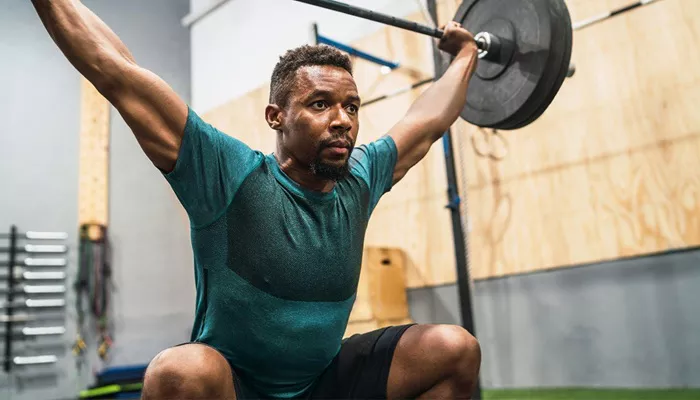Muscle strength training is an essential part of any fitness regimen. It focuses on building muscle mass, enhancing physical performance, and improving overall health. This article will provide a detailed guide on muscle strength training, explaining its importance, benefits, types of exercises, and how to incorporate it into your routine. We will also integrate important concepts like anaerobic training and its role in building muscle strength.
Understanding Muscle Strength Training
Muscle strength training is the process of using resistance to induce muscular contraction. This helps in building the strength, size, and endurance of skeletal muscles. It can be achieved through various methods, including free weights, resistance bands, or machines. The focus is to progressively overload muscles, pushing them beyond their normal limits to stimulate growth.
The Importance of Muscle Strength
Building muscle strength is not just about aesthetics. Strong muscles help with daily tasks, improve posture, reduce the risk of injuries, and contribute to a better metabolism. As you increase muscle strength, your body becomes more efficient at burning calories, even at rest, which can aid in weight management. Additionally, muscle strength is closely related to bone density, reducing the risk of osteoporosis.
Key Benefits of Muscle Strength Training
Muscle strength training offers numerous benefits, making it an integral part of a healthy lifestyle. These benefits extend beyond just physical appearance and include:
Improved Functional Strength
Functional strength refers to the ability to perform everyday activities with ease. From lifting groceries to carrying children, muscle strength training helps improve your ability to handle these tasks safely and efficiently.
Enhanced Metabolic Rate
Stronger muscles increase your resting metabolic rate. This means your body burns more calories even when you’re not actively exercising, contributing to better weight control.
Better Mental Health
Strength training is known to release endorphins, which are the body’s natural mood boosters. Regular strength workouts can help reduce stress, anxiety, and symptoms of depression.
Types of Muscle Strength Training Exercises
There are several different exercises you can incorporate into your strength training program. These exercises can be categorized into different groups based on the type of resistance they offer:
Free Weights
Free weights, including dumbbells and barbells, allow for a wide range of motion and target multiple muscle groups simultaneously. They require more coordination and engagement from stabilizing muscles, which helps in overall muscle development.
Bodyweight Exercises
Bodyweight exercises use the individual’s own body as resistance. Push-ups, squats, lunges, and planks are some examples of effective bodyweight exercises. These can be done anywhere, making them great for home workouts.
Resistance Bands
Resistance bands are an excellent alternative to free weights. They are portable, versatile, and can be used for both upper and lower body exercises. They are especially beneficial for beginners who need to start with lower resistance.
Machines
Strength training machines target specific muscles and are easy to use. They help control the movement of the exercise, providing a safer and more controlled environment for those new to resistance training. Machines are also beneficial for isolating specific muscle groups.
Progressive Overload in Muscle Strength Training
Progressive overload is the principle of gradually increasing the resistance or intensity of exercises to challenge muscles and promote growth. This can be done by increasing weight, adding repetitions, or changing the exercise type.
How to Implement Progressive Overload
To apply progressive overload effectively, increase the weight, frequency, or duration of exercises gradually. For example, if you are lifting weights, increase the weight by 5-10% once the previous weight becomes manageable. Similarly, increasing your sets or reps can also provide additional challenge.
Integrating Anaerobic Exercise with Muscle Strength Training
Anaerobic exercise is an important component of strength training. Unlike aerobic exercise, which relies on oxygen, anaerobic exercise involves short bursts of intense activity that use energy stored in the muscles. It is particularly effective for building muscle strength and improving endurance.
What is Anaerobic Exercise?
Anaerobic exercise includes activities like weightlifting, sprinting, and high-intensity interval training (HIIT). These exercises require the body to exert maximum effort for short periods, followed by rest or low-intensity activity. Anaerobic training primarily targets muscle growth and strength development.
Anaerobic Training for Strength
Anaerobic training can be integrated into your muscle strength regimen. For example, performing circuit training with short rest intervals can maximize muscle stimulation while also improving cardiovascular health. Anaerobic exercises are ideal for building muscle mass, improving endurance, and enhancing overall fitness.
Anaerobic Exercise At Home
You don’t need a gym to perform anaerobic exercises. Many exercises like bodyweight squats, push-ups, and planks can be done at home.
How to Create a Muscle Strength Training Routine
Designing an effective strength training routine involves balancing intensity, frequency, and rest. A well-rounded program should include exercises targeting all major muscle groups, including legs, back, chest, arms, and core.
Sample Muscle Strength Training Routine
- Day 1: Upper Body – Push-ups, dumbbell bench press, shoulder press, bicep curls, tricep dips.
- Day 2: Lower Body – Squats, lunges, deadlifts, calf raises.
- Day 3: Core – Planks, Russian twists, leg raises.
- Day 4: Full Body – Circuit training with a combination of bodyweight and free-weight exercises.
Recovery and Rest
Rest is crucial in muscle strength training. Muscles need time to recover and grow after intense workouts. Ensure you get adequate sleep and take rest days to allow your muscles to repair and become stronger.
Conclusion
Muscle strength training is a cornerstone of fitness. Whether you are trying to build muscle mass, enhance endurance, or improve functional strength, a well-rounded strength training routine is essential. By incorporating anaerobic exercises, progressive overload, and balanced recovery, you can achieve your fitness goals efficiently and safely. Start your journey towards a stronger body today!

